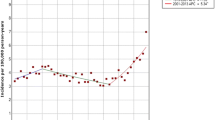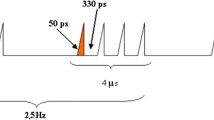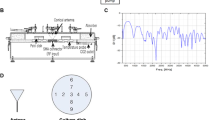Abstract
Background: Electric and magnetic fields (EMF) might be involved in human disease and numerous research and scientific reviews have been conducted to address this question. In particular thyroid structural and functional alterations caused by various forms of non-ionizing radiation have been described. Aim: The aim of this study was to analyze the possible effects of EMF on thyroid, in particular we analyzed the effects caused by a GSM (Global System for Mobile Communications) signal (900 MHz) on cultured thyroid cells (FRTL-5). Material and methods: The experimental setup was designed in order to expose samples to a radio frequency wave in well-controlled conditions. We used the FRTL-5 cell line, an epithelial monoclonal continuous cell line derived from Fisher rat thyroid tissue growing as monolayer, expressing the TSH receptor and the sodium-iodide symporter (NIS). FRTL-5 were subsequently irradiate for 24, 48, and 96 h with EMF (800–900 MHz, power-frequency of mobile communication systems) and iodide uptake and cAMP production were measured. Results: The irradiation of cells with EMF at 900 Mhz for 24, 48, and 96 h did not influence the level of cAMP production and was not able to modify iodide accumulation in FRTL-5 cells with respect to basal conditions. Conclusions: In conclusion, EMF do not seem to be able to interfere with the biochemical properties of FRTL-5 cells in vitro.
Similar content being viewed by others
References
Feychting M, Ahlbom A, Kheifets L. EMF and health. Annu Rev Public Health 2005, 26: 165–89.
Wright NA, Borland RG, Cookson JH, et al. Biological studies with continuous-wave radiofrequency (28 MHz) radiation. Radiat Res 1984, 97: 468–77.
Kozhevnikova LA, Mukhina LV, Kosenko AF, Korol’kov AA, Shelest LN. The morphofunctional status of the hypothalamo-hypophyseal neurosecretory system and the energy processes in the gastric tissues following electromagnetic irradiation in the millimeter wave range. Radiobiologiia 1989, 29: 672–5.
Saddiki-Traki F, Lescoat G, Maniey J. Effects of postnatal microwave exposure on thyrotropin level in the adult male rat. J Physiol (Paris) 1986, 81: 3–6.
Lu ST, Lebda N, Michaelson SM, Pettit S. Serum-thyroxine levels in microwave-exposed rats. Radiat Res 1985, 101: 413–23.
Lu ST, Lebda NA, Pettit S, Michaelson SM. The relationship of decreased serum thyrotropin and increased colonic temperature in rats exposed to microwaves. Radiat Res 1985, 104: 365–86.
Navakatikian MA, Gordienko VM, Slavnov VN, Nogachevskaia SI, Tomashevskaia LA. The effect of microwave irradiation on the status of the thyroid gland. Radiobiologiia 1990, 30: 679–84.
Schönborn F, Burkhardt M, Kuster N. Differences in energy absorption between heads of adults and children in the near field of sources. Health Phys 1998, 74: 160–8.
La Cara F, Scarfi MR, D’Auria S, et al. Different effects of microwave energyand conventional heaton the activity of a thermophilic beta-galactosidase from Bacillus acidocaldarius. Bioelectromagnetics 1999, 20: 172–6.
Laval L, Leveque P, Jecko B. A new in vitro exposure device for the mobile frequency of 900 MHz. Bioelectromagnetics 2000, 21: 255–63.
Ardoino L, Lopresto V, Mancini S, Pinto R, Lovisolo GA. 1800MHz in vitro exposure device for experimental studies on the effects of mobile communication systems. Radiat Prot Dosimetry 2004, 112: 419–28.
Bernardi P, Cavagnaro M, Pisa S, Piuzzi E. Specific absorption rate and temperature elevation in a subject exposed in the far-field of radio-frequency sources operating in the 10-900-MHz range. IEEE Trans Biomed Eng 2003, 50: 295–304.
Vitti P, Elisei R, Tonacchera M, et al. Detection of thyroid-stimulating antibody using Chinese hamster ovary cells transfected with cloned human thyrotropin receptor. J Clin Endocrinol Metab 1993, 76: 499–503.
Selmaoui B, Lambrozo J, Touitou Y. Endocrine functions in young men exposed for one night to a 50-Hz magnetic field. Acircadian study of pituitary, thyroid and adrenocortical hormones. Life Sci 1997, 61: 473–86.
Somosy Z. Radiation response of cell organelles. Micron 2000, 31: 165–81.
Knave B. Electromagnetic fields and health outcomes. Ann Acad Med Singapore 2001, 30: 489–93.
Leszczynski D, Joenväärä S, Reivinen J, Kuokka R. Non-thermal activation of the hsp27/p38MAPK stress pathway by mobile phone radiation in human endothelial cells: molecular mechanism for cancer- and blood-brain barrier-related effects. Differentiation 2002, 70: 120–9.
Bartsch H, Bartsch C, Seebald E, et al. Chronic exposure to a GSM-like signal (mobile phone) does not stimulate the development of DMBA-induced mammary tumors in rats: results of three consecutive studies. Radiat Res 2002, 157: 183–90.
Bortkiewicz A. Astudy on the biological effects of exposure mobile-phone frequency EMF. Med Pr 2001 52: 101–6.
Lotz WG, Michaelson SM. Temperature and corticosterone relationships in microwave-exposed rats. J Appl Physiol 1978, 44: 438–45.
Lu ST, Lebda N, Pettit S, Michaelson SM. Microwave-induced temperature, corticosterone, and thyrotropin interrelationships. Appl Physiol 1981, 50: 399–405.
Michaelson SM, Houk WM, Lebda NJ, Lu ST, Magin RL. Biochemical and neuroendocrine aspects of exposure to microwaves. Ann N Y Acad Sci 1975, 247: 21–45.
Magin RL, Lu ST, Michaelson SM. Microwave heating effect on the dog thyroid gland. IEEE Trans Biomed Eng 1977, 24: 522–9.
Roberts NJ Jr, Michaelson SM, Lu ST. The biological effects of radiofrequency radiation: a critical review and recommendations. Int J Radiat Biol Relat Stud Phys Chem Med 1986, 50: 379–420.
Moustafa YM, Moustafa RM, Belacy A, Abou-El-Ela SH, Ali FM. Effects of acute exposure to the radiofrequency fields of cellular phones on plasma lipid peroxide and antioxidase activities in human erythrocytes. J Pharm Biomed Anal 2001, 26: 605–8.
Djeridane Y, Touitou Y, de Seze R. Influence of electromagnetic fields emitted by GSM-900 cellular telephones on the circadian patterns of gonadal, adrenal and pituitary hormones in men. Radiat Res 2008, 169: 337–43.
Koyu A, Cesur G, Ozguner F, Akdogan M, Mollaoglu H, Ozen S. Effects of 900 MHz electromagnetic field on TSH and thyroid hormones in rats. Toxicol Lett 2005, 157: 257–62.
Eskandari S, Loo DD, Dai G, Levy O, Wright EM, Carrasco N. Thyroid Na+/I-symporter. Mechanism, stoichiometry, and specificity. J Biol Chem 1997, 272: 27230–8.
Author information
Authors and Affiliations
Corresponding author
Rights and permissions
About this article
Cite this article
Dimida, A., Ferrarini, E., Agretti, P. et al. Electric and magnetic fields do not modify the biochemical properties of FRTL-5 cells. J Endocrinol Invest 34, 185–189 (2011). https://doi.org/10.1007/BF03347064
Accepted:
Published:
Issue Date:
DOI: https://doi.org/10.1007/BF03347064




